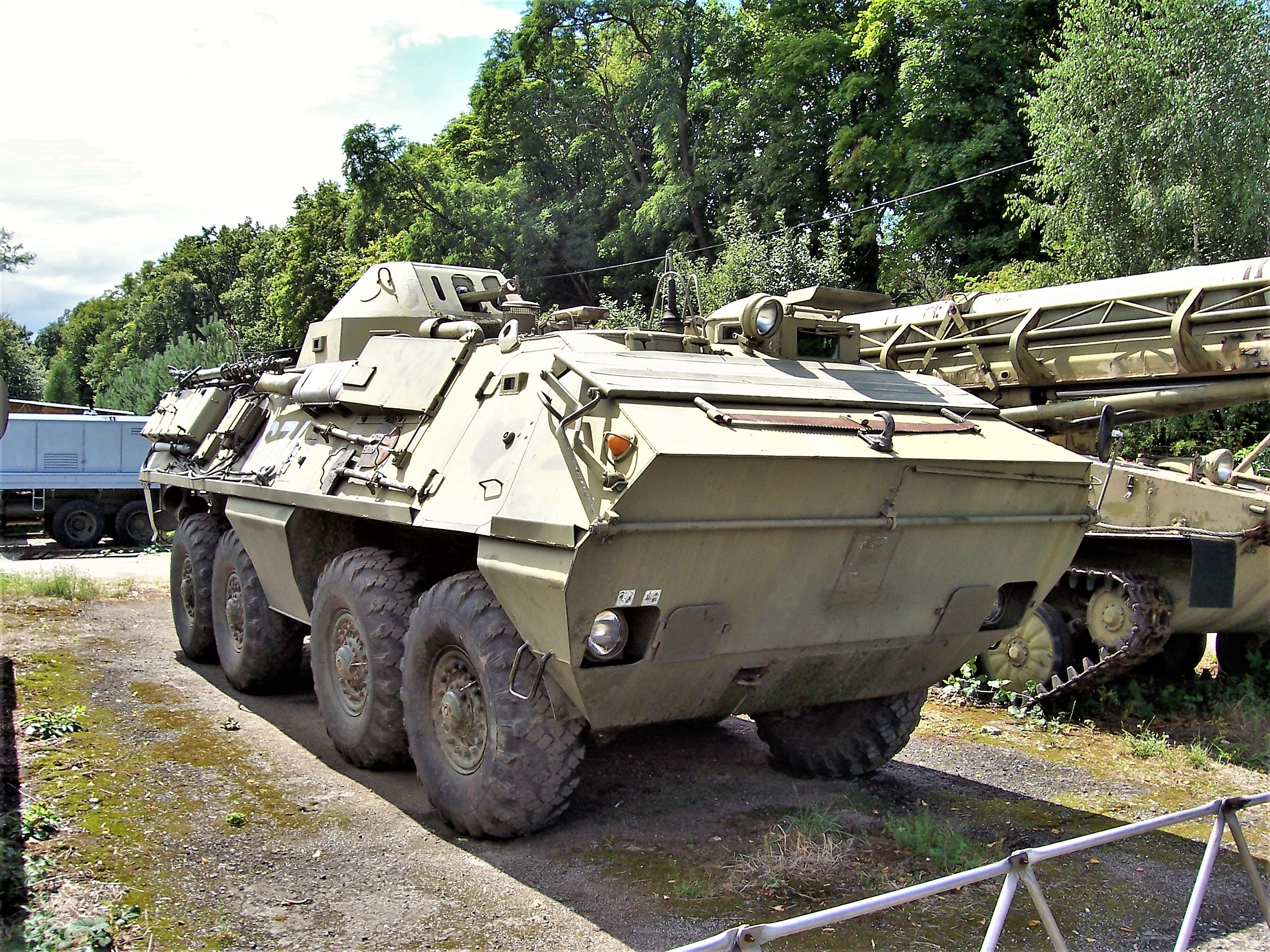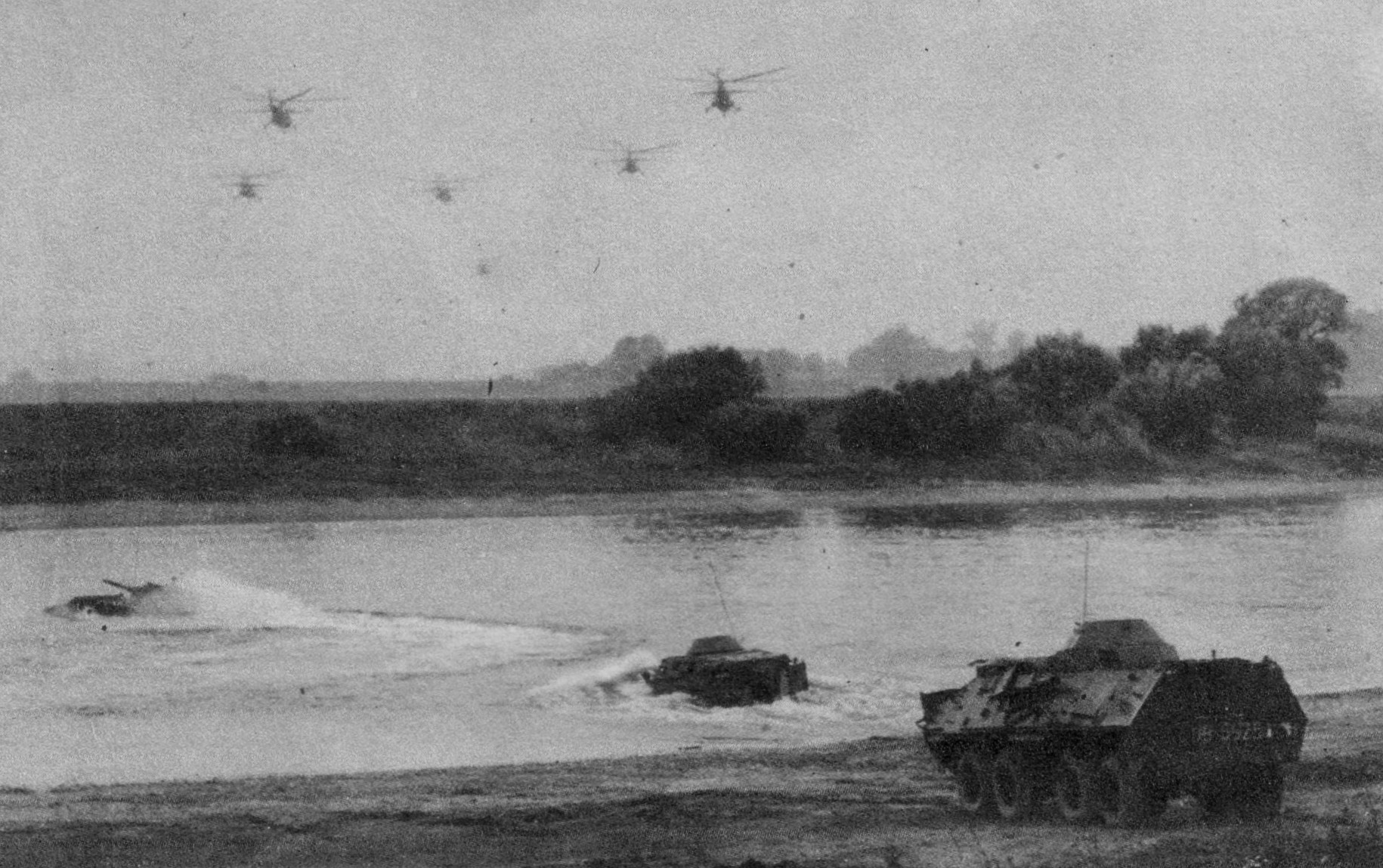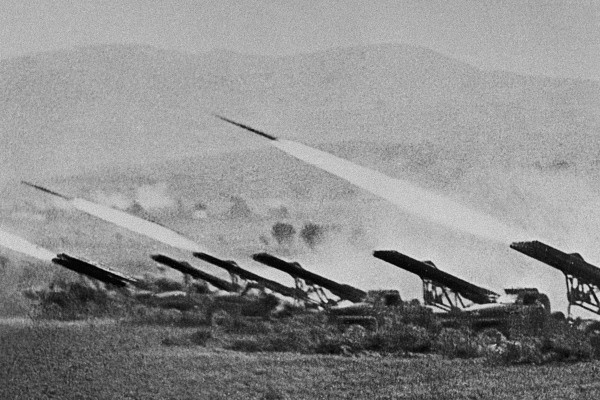|
Battle Of Mutukula
The Battle of Mutukula (Kiswahili: ''Mapigano ya Mutukula'') took place from 21–22 January 1979 near and in the town of Mutukula, Uganda, during the Uganda–Tanzania War. After repulsing a Ugandan invasion of the Kagera Salient in 1978, Tanzanian commanders feared that Ugandan forces stationed upon the high ground in Mutukula, a town located along the Tanzania–Uganda border, still posed a threat to their territory. On the night of 21 January 1979 the Tanzanian 208th Brigade crossed the border and surrounded the town. The following morning it attacked, and the Ugandan garrison—including the Gondo and Suicide Battalions—fled. Afterwards the Tanzanians razed the locale in revenge for the damage wrought by the Ugandans in Kagera. Background In 1971 Colonel Idi Amin launched a military coup that overthrew the President of Uganda, Milton Obote, precipitating a deterioration of relations with the neighbouring state of Tanzania. Amin installed himself as President and ruled ... [...More Info...] [...Related Items...] OR: [Wikipedia] [Google] [Baidu] |
Uganda–Tanzania War
The Uganda–Tanzania War, known in Tanzania as the Kagera War (Kiswahili: ''Vita vya Kagera'') and in Uganda as the 1979 Liberation War, was fought between Uganda and Tanzania from October 1978 until June 1979 and led to the overthrow of Ugandan President Idi Amin. The war was preceded by a deterioration of relations between Uganda and Tanzania following Amin's 1971 overthrow of President Milton Obote, who was close to the President of Tanzania, Julius Nyerere. Over the following years, Amin's regime was destabilised by violent purges, economic problems, and dissatisfaction in the Uganda Army. The circumstances surrounding the outbreak of the war are not clear, and differing accounts of the events exist. In October 1978, Ugandan forces began making incursions into Tanzania. Later that month, the Uganda Army launched an invasion, looting property and killing civilians. Ugandan official media declared the annexation of the Kagera Salient. On 2 November, Nyerere declared war ... [...More Info...] [...Related Items...] OR: [Wikipedia] [Google] [Baidu] |
Brigadier
Brigadier is a military rank, the seniority of which depends on the country. In some countries, it is a senior rank above colonel, equivalent to a brigadier general or commodore, typically commanding a brigade of several thousand soldiers. In other countries, it is a non-commissioned rank. Origins and history The word and rank of "Brigadier" originates from France. In the French Army, the Brigadier des Armées du Roi (Brigadier of the King's Armies) was a general officer rank, created in 1657. It was an intermediate between the rank of Mestre de camp and that of Maréchal de camp. The rank was first created in the cavalry at the instigation of Marshal Turenne on June 8, 1657, then in the infantry on March 17, 1668, and in the dragoons on April 15, 1672. In peacetime, the brigadier commanded his regiment and, in maneuvers or in wartime, he commanded two or three - or even four - regiments combined to form a brigade (including his own, but later the rank was also awarded ... [...More Info...] [...Related Items...] OR: [Wikipedia] [Google] [Baidu] |
Masaka
Masaka is a city in the Buganda Region of Uganda, west of Lake Victoria. The city is the headquarters of Masaka District. Location Masaka is approximately to the south-west of Kampala on the highway to Mbarara. The city is close to the Equator. The coordinates of Masaka are 0°20'28.0"S, 31°44'10.0"E (Latitude:-0.341111; Longitude:31.736111). Masaka lies at an average elevation of above sea level. History Masaka was founded as a township in 1953. It became a town council in 1958 and a municipality in 1968. Masaka was a strategically important location during the Uganda–Tanzania War (1978–79), and was accordingly garrisoned by Uganda Army troops. These soldiers terrorized the local civilians, and most fled the town. On 23–24 February 1979, the Tanzania People's Defence Force and allied Ugandan rebels attacked the settlement, resulting in the Battle of Masaka. The town was bombarded with artillery, and fell to the Tanzanian-led forces after light resistance. The Tanz ... [...More Info...] [...Related Items...] OR: [Wikipedia] [Google] [Baidu] |
Lukaya, Uganda
Lukaya is a town in the Kalungu District of the Central Region of Uganda. Location Lukaya is on the Masaka– Kampala highway, close to the shores of Lake Victoria and just south of the equator. The town is approximately , by road, north-east of Masaka, the nearest large city. This is approximately , by road, south-west of Kampala, the capital and largest city of Uganda. The coordinates of Lukaya are 0°09'03.0"S, 31°52'28.0"E (Latitude:-0.150833; Longitude:31.874444). Lukaya town is located at an average elevation of , above sea level. Overview The town was founded by traders from India who traded primarily in coffee, cotton, and maize. Africans built restaurants and lodges in the town to cater for workers. Long distance truck drivers destined to the Western Region of Uganda and neighboring countries often stopped there to eat and rest. As of December 2017, the town had become a busy urban centre. Prostitution in Lukaya Town Council poses a health risk and is factor in t ... [...More Info...] [...Related Items...] OR: [Wikipedia] [Google] [Baidu] |
Godwin Sule
Godwin Sule (died 11 March 1979) was a high-ranking Sudanese-born Ugandan military officer who held important commands in the Uganda Army during the dictatorship of President Idi Amin. A native of southern Sudan, he fought as rebel in the First Sudanese Civil War before migrating to Uganda. There he rose to head of the Malire Battalion and later the Paratroopers Military School. Regarded as one of the most talented soldiers in the Uganda Army during Amin's rule, Sule was tasked with leading the last major Ugandan counter-offensive during the Uganda–Tanzania War of 1978–79. This operation culminated in the Battle of Lukaya of 10–11 March 1979, during which Sule was killed under unclear and disputed circumstances. His death resulted in the collapse of the Ugandan offensive, contributing to the eventual overthrow of Amin's regime. Biography Rebel activity and rise in the Uganda Army Sule originated from southern Sudan. He was Christian as well as an ethnic Sudanese-Nubian a ... [...More Info...] [...Related Items...] OR: [Wikipedia] [Google] [Baidu] |
Taban Lupayi
Taban Lupayi, often just called Taban, was a high-ranking Sudanese-born Ugandan military officer during the dictatorship of Idi Amin. He rose to commander of the Marine Regiment and deputy chief of staff of the Uganda Army following the 1971 Ugandan coup d'état, and became a member of Amin's inner circle. Taban deserted his post during the Uganda–Tanzania War in 1979, fleeing to southern Sudan. Biography Early life and rise to power An ethnic Nubian and/or Pojulu, Taban was a Muslim and nephew of Idi Amin. He was born in southern Sudan. In his early life, he worked as a houseboy and had very little education. '' Africa Confidential'' claimed that Taban was illiterate. He eventually joined the Uganda Army, and served as a private during the presidency of Milton Obote. When tensions rose between Obote and army commander Idi Amin, the latter organized a bodyguard of trusted soldiers, including Taban. Following the 1971 Ugandan coup d'état which allowed Amin to seize t ... [...More Info...] [...Related Items...] OR: [Wikipedia] [Google] [Baidu] |
Armoured Personnel Carrier
An armoured personnel carrier (APC) is a broad type of armoured military vehicle designed to transport personnel and equipment in combat zones. Since World War I, APCs have become a very common piece of military equipment around the world. According to the definition in the Treaty on Conventional Armed Forces in Europe, an APC is "an armoured combat vehicle which is designed and equipped to transport a combat infantry squad and which, as a rule, is armed with an integral or organic weapon of less than 20 millimetres calibre." Compared to infantry fighting vehicles (IFVs), which are also used to carry infantry into battle, APCs have less armament and are not designed to provide direct fire support in battle. Infantry units which travel in APCs are known as mechanized infantry. Some militaries also make a distinction between infantry units which use APCs and infantry units which use IFVs, with the latter being known as armoured infantry in such militaries. History The genesis ... [...More Info...] [...Related Items...] OR: [Wikipedia] [Google] [Baidu] |
M4 Sherman
} The M4 Sherman, officially Medium Tank, M4, was the most widely used medium tank by the United States and Western Allies in World War II. The M4 Sherman proved to be reliable, relatively cheap to produce, and available in great numbers. It was also the basis of several other armored fighting vehicles including self-propelled artillery, tank destroyers, and armored recovery vehicles. Tens of thousands were distributed through the Lend-Lease program to the British Commonwealth and Soviet Union. The tank was named by the British after the American Civil War General William Tecumseh Sherman. The M4 Sherman evolved from the M3 Medium Tank, which for speed of development had its main armament in a side sponson mount. The M4 retained much of the previous mechanical design, but moved the main 75 mm gun into a fully traversing central turret. One feature, a one-axis gyrostabilizer, was not precise enough to allow firing when moving but did help keep the gun aimed in rou ... [...More Info...] [...Related Items...] OR: [Wikipedia] [Google] [Baidu] |
Kakuuto, Uganda
Kakuuto is a town in southwestern Central Uganda. Location Kakuuto is located in Kyotera District, approximately , by road, south of Masaka, the largest city in the sub-region. This location lies immediately west of the highway between Masaka and the border town of Mutukula, at an elevation of , above sea level. Mutukula, the border town between Uganda and Tanzania, lies approximately , by road, south of Kakuuto. The coordinates of Kakuuto are:0°50'24.0"S, 31°27'36.0" (Latitude:-0.8400; Longitude:31.4600). Overview Kakuuto is a small, town in southern Kyotera District. It is the county seat of Kakuuto County. The surrounding area is primarily rural and poor. The population of the area has been greatly adversely affected by the HIV/ AIDS epidemic over the past three decades. With the help of charities and NGO's, the town and region is slowly recovering. Points of interest The following points of interest lie within the town or close to the town limits: * The headquarters of ... [...More Info...] [...Related Items...] OR: [Wikipedia] [Google] [Baidu] |
OT-64 SKOT
The OT-64 SKOT (Czech acronym for: ''Střední Kolový Obrněný Transportér'', and/or Polish Średni ''Kołowy Opancerzony Transporter'' – medium wheeled armoured transporter) is an amphibious, armored personnel carrier (8x8), developed jointly by Poland ( PRL) and Czechoslovakia ( ČSSR) well into the 1960s. Until the early 1970s Czechoslovakia and Poland produced around 4,500 OT-64 SKOTs of all variants, just under a third of which were exported.BURIAN, Michal; DÍTĚ, Josef; DUBÁNEK, Martin. OT-64 SKOT: historie a vývoj obrněného transportéru. 1. vyd. Praha: Grada, 2010.Kajetanowicz Jerzy, Transporter opancerzony SKOT i jego odmiany produkowane w Polsce, Zeszyty Naukowe WSOWL 2016, nr 2Kubiaczyk C., Transporter opancerzony SKOT, A. Karaś, W. Stefanowska (red.), J. Magnuski, Seria: Typy broni i uzbrojenia, vol. 9, Warszawa: Wydawnictwo Ministerstwa Obrony Narodowej, 1971 In 2002, the modernization of the SKOT transporter began in Poland. The work resulted in the KTO ... [...More Info...] [...Related Items...] OR: [Wikipedia] [Google] [Baidu] |
Katyusha Rocket Launcher
The Katyusha ( rus, Катю́ша, p=kɐˈtʲuʂə, a=Ru-Катюша.ogg) is a type of rocket artillery first built and fielded by the Soviet Union in World War II. Multiple rocket launchers such as these deliver explosives to a target area more intensively than conventional artillery, but with lower accuracy and requiring a longer time to reload. They are fragile compared to artillery guns, but are cheap, easy to produce, and usable on almost any chassis. The Katyushas of World War II, the first self-propelled artillery mass-produced by the Soviet Union,Zaloga, p 150. were usually mounted on ordinary trucks. This mobility gave the Katyusha, and other self-propelled artillery, another advantage: being able to deliver a large blow all at once, and then move before being located and attacked with counter-battery fire. Katyusha weapons of World War II included the BM-13 launcher, light BM-8, and heavy BM-31. Today, the nickname ''Katyusha'' is also applied to newer truck-mounte ... [...More Info...] [...Related Items...] OR: [Wikipedia] [Google] [Baidu] |
Yusuf Gowon
Yusuf Gowon (born Yusuf Mogi in 1936) is an Ugandan retired military officer who served as chief of staff for the Uganda Army during the dictatorship of Idi Amin. Originally a farmer, Gowon quickly rose in the ranks of the military due to a combination of happenstance and his skills in politics. Compared with other high-ranking officials of Amin's regime, he was regarded as humane; nevertheless, he was probably involved in some political murders. His appointment as chief of staff was mostly owed to the fact that he was regarded by President Amin as loyal, not ambitious, and of no threat to his own rule. Gowon's lack of talent for tactics and strategy came to the fore when the Uganda–Tanzania War broke out in 1978, and his leadership of the Uganda Army during this conflict was extensively criticised. Many of his comrades and subordinates even blamed him for Uganda's defeat in the conflict with Tanzania. When Amin's regime began collapsing in 1979 and his own soldiers intended to m ... [...More Info...] [...Related Items...] OR: [Wikipedia] [Google] [Baidu] |





